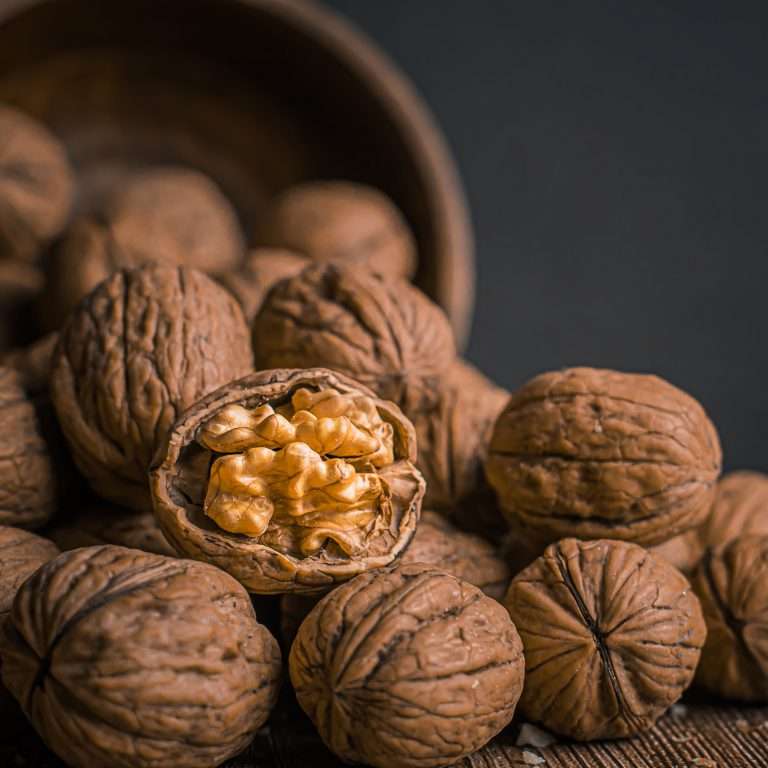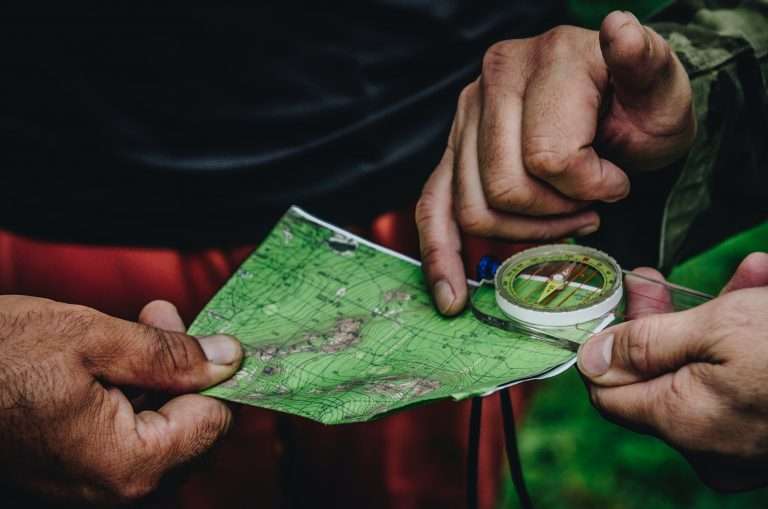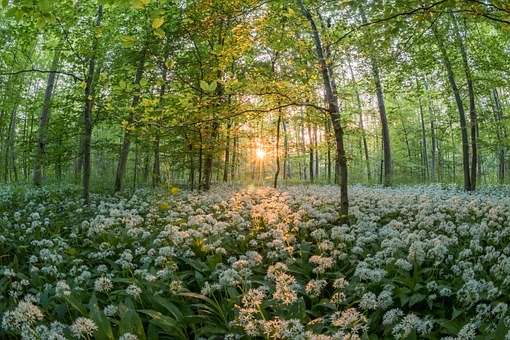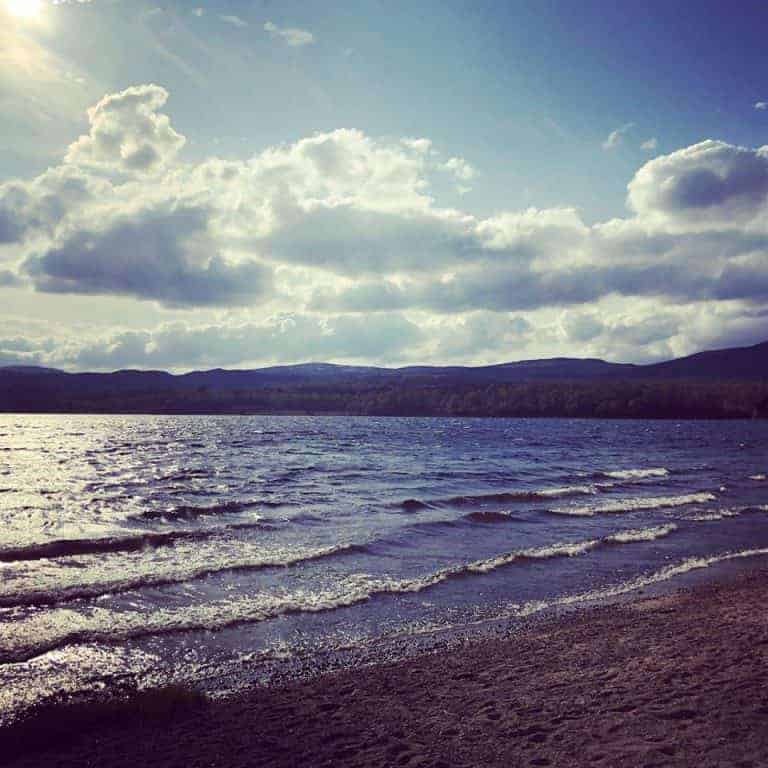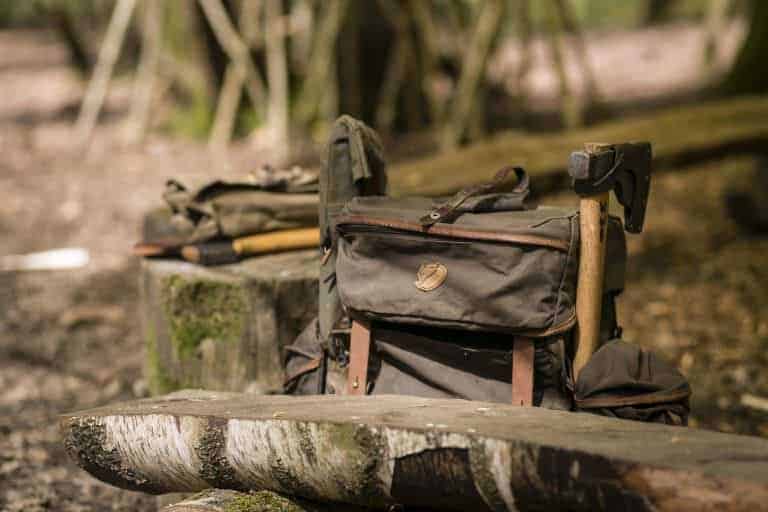Long-Term Shelter Building and Bushcraft
One of the key differences between bushcraft and survival is that bushcraft is about being comfortable in the woods. Working and living in harmony with nature, rather than trying to overcome it. Part of this involves the creation of shelters for more long-term, or intermediate-term, living in the woods. This blog is based on some of the skills that will be covered in our intermediate bushcraft course. As always, feel free to read the whole blog or skip to the section that interests you the most.
Considerations for long-term shelter building
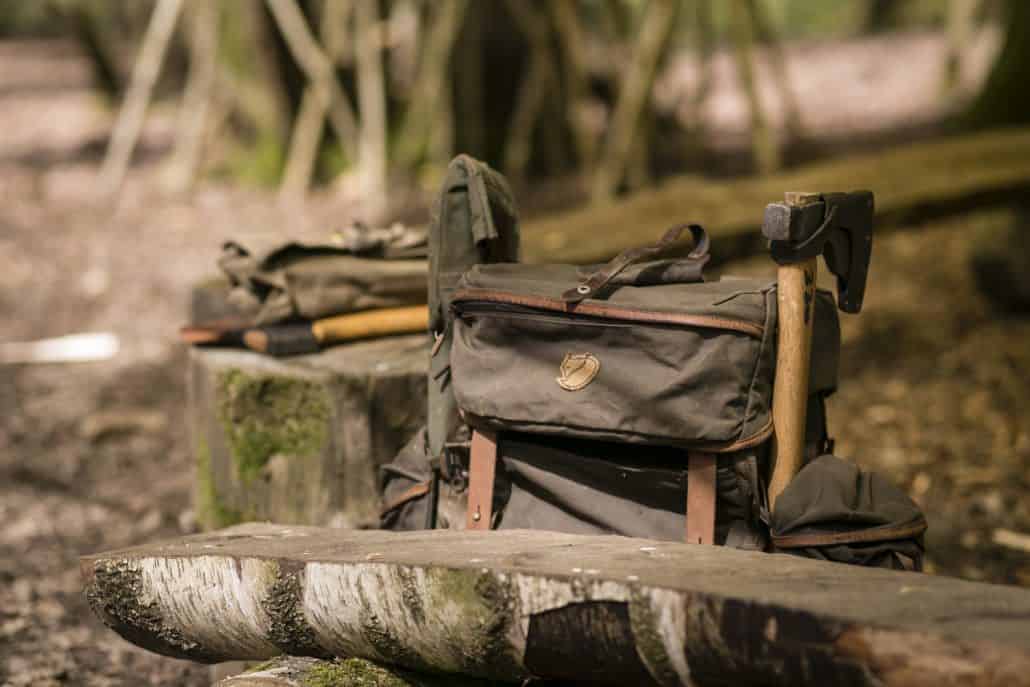
Provided that you have some form of temporary shelter established then you and your group can look at building a more semi-permanent structure. This will enable you to live out in the woods for a longer period and in more comfort. While the following considerations, location, hygiene, etc. should always be considered they become of critical importance when staying in the woods for more than a weekend.
It should also be said that you need to consider your priorities when building a longer-term shelter. Having constructed a temporary shelter, sourced water and started a fire you can then start thinking about building a more permanent structure (provided that your food is covered). Don’t rush into building a long-term bushcraft shelter until these priorities have been met. Doing so will only burn unnecessary calories and exhaust you and your team.
Remember though, the only way that you can really learn and improve your bushcraft skills is by attending a bushcraft course. Take a look at our bushcraft courses here, or click the link below to book your space on our intermediate bushcraft course.
Advance your bushcraft
Location
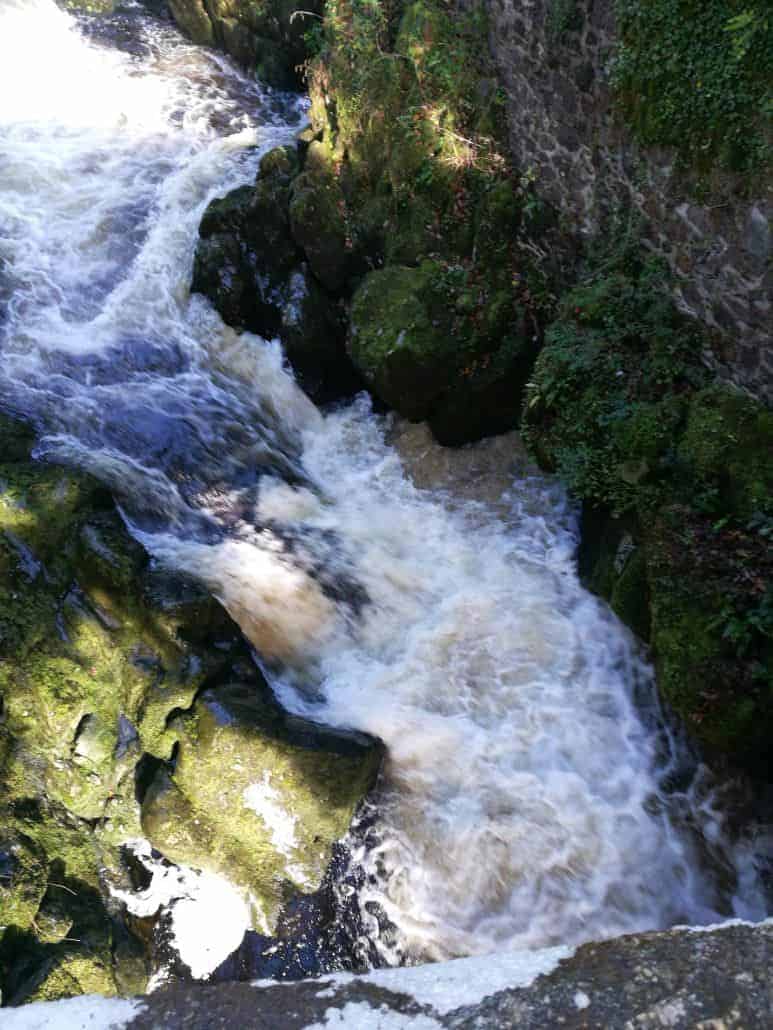
As with building any type of shelter, building a long-term shelter begins with choosing a good location. This should not only be somewhere where materials are abundant, the ground is free from plants that could cause irritants, such as Giant Hogweed, and the key to long-term bushcraft shelter building, close to a source of water. With a temporary one-night or weekend shelter, you may be able to carry in the water that you need for the duration of the trip you are extremely unlikely to be able to do the same when staying in the woods for a week. We’re going to look at more of these in detail in the following sections.
Water
It is best to build your shelter as close to a source of water as possible, without putting your shelter in danger of flooding. You will want to be within easy access of water as it is likely that you will need to make the trip to your source of water at least once a day. Be aware of building your shelter on tracks and paths used by animals to access water.
Materials
You should look to build your long-term bushcraft shelter where there is an abundance of building materials and firewood. The amount of material needed will be dependent upon the number of people in your group and the type of shelter that you are looking to build. A group lean-to for five occupants would obviously require more materials than, say, a simple tripod structure.
Sun
The sun can provide warmth and light, great for morale when living in the woods for an intermediate period of time. Be sure to try and locate your long-term bushcraft shelter in a position that either shades you from the sun, useful in summer, or maximises your exposure to it, useful in winter.
Wind
Look at the trees in the surrounding area. The way that they are growing can help to give you an idea of the prevalent wind direction. You will want to build your shelter in a position that is out of the wind and ideally has the prevalent wind direction passing across (e.g. not into or behind) the front of your shelter. This will help to keep the smoke from your fire out of your shelter will ensuring that you benefit from the fire’s heat, it will also help you to minimise draft.
Sign up to receive bushcraft tips, advice, and news
Hygiene
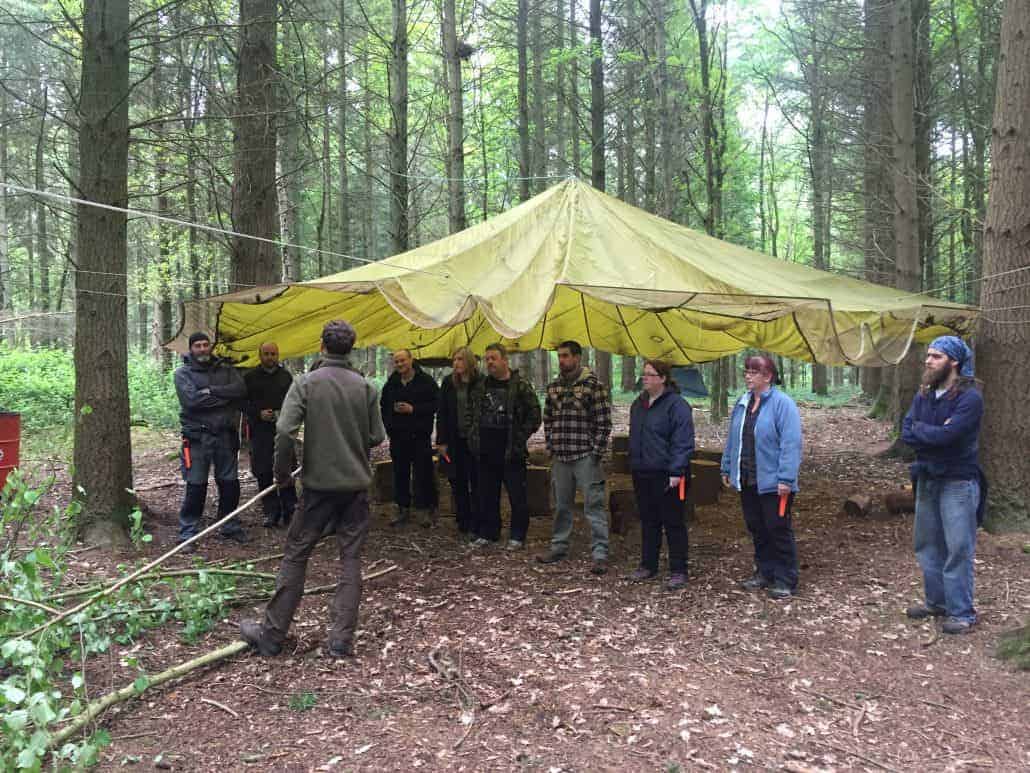
Hygiene is a hugely important and often overlooked aspect of bushcraft. Keeping your camp clean and organised is key to avoiding upset stomachs, contaminated food and, in a worse case scenario, the spread of disease. We look at organisation in bushcraft, particularly in terms of food, fire, and hygiene in our blog here.
Latrines
When building a long-term bushcraft shelter it is very important to consider toilet arrangements, this is particularly true if in a large group. Latrines should be dug far away from the camp and dug deep. Toilet paper should be burned or carried out with you. Be sure not to burn your toilet paper on the communal fire but instead burn it by the latrine and carry a Bic lighter or similar with you for this express purpose.
General hygiene
Keeping clean in the woods can be vital for boosting morale. When on a backpacking trip it is also vital to keep your feet in tip-top condition. A daily washing routine, downstream from where you source your water, can do wonders for lifting the spirits. Be aware though that even natural shampoos can upset the delicate balance of the river so avoid them if possible.
Advance your bushcraft
Fire
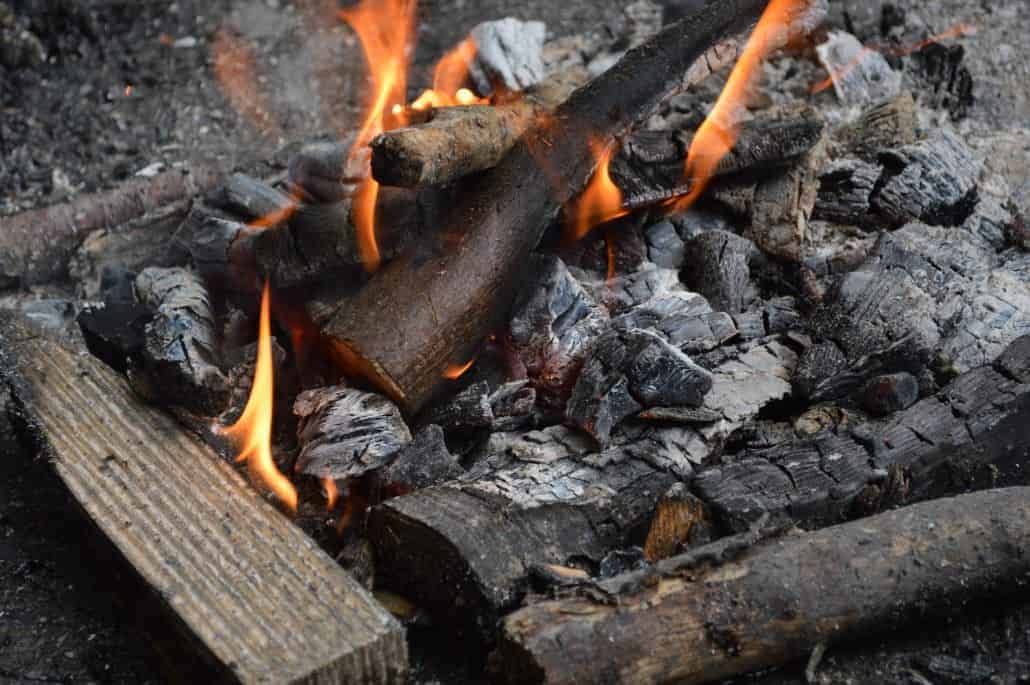
The type of fire that you will need will be dictated by the type of shelter that you have built. A large group lean-to for five or so people will require a different fire to a lean-to or tripod structure for a single person.
Fuel
Fuel should be in abundance, something that you will have ensured when choosing the location of your bushcraft shelter. Firewood should have been collected and stored in your temporary shelter before you start work on your long-term structure. This will stop you having to collect it at the end of the day when you’re tired and the light is fading.
Keeping the fire going
The decision to keep the fire going throughout the day and night, perhaps working in shifts to do so, or to relight it every morning and/or evening is often down to how easy it is to light. If you’re able to ignite the fire using a fire steel and, say, birch bark, cotton wool or such materials then perhaps you would choose to regularly relight your fire. On the other hand, if you were forced by circumstances to light your fire using a bow drill, a method which can be highly energy intensive then it might be a better idea to save your strength and ensure that your fire remains alight.
Advance your bushcraft
Kit

There are a few key pieces of kit that you will need for building a long-term bushcraft shelter. These are outlined below, remember though, you need to choose the kit that suits your purposes and abilities.
- Fallkniven DC4
 This diamond/ceramic whetstone is perfect for use in the field.
This diamond/ceramic whetstone is perfect for use in the field.
https://www.fallkniven.com/en/knife/dc4/ - Knives
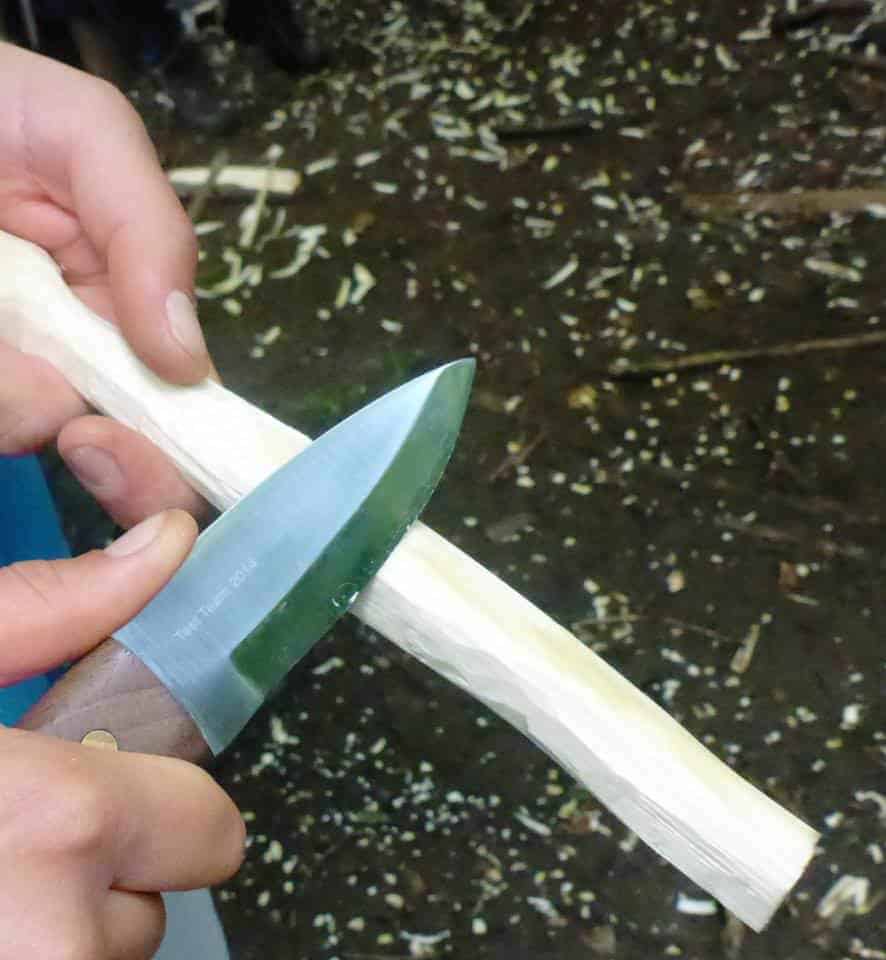
Wildway Bushcraft use Bear Blades.
“Constructed from superb quality D2 steel this knife is ideal for bushcraft and wood crafting. Our most popular knife due to its versatility and functionality, suited to tough daily use in the woods.”
http://bearblades.co.uk/ - Axe
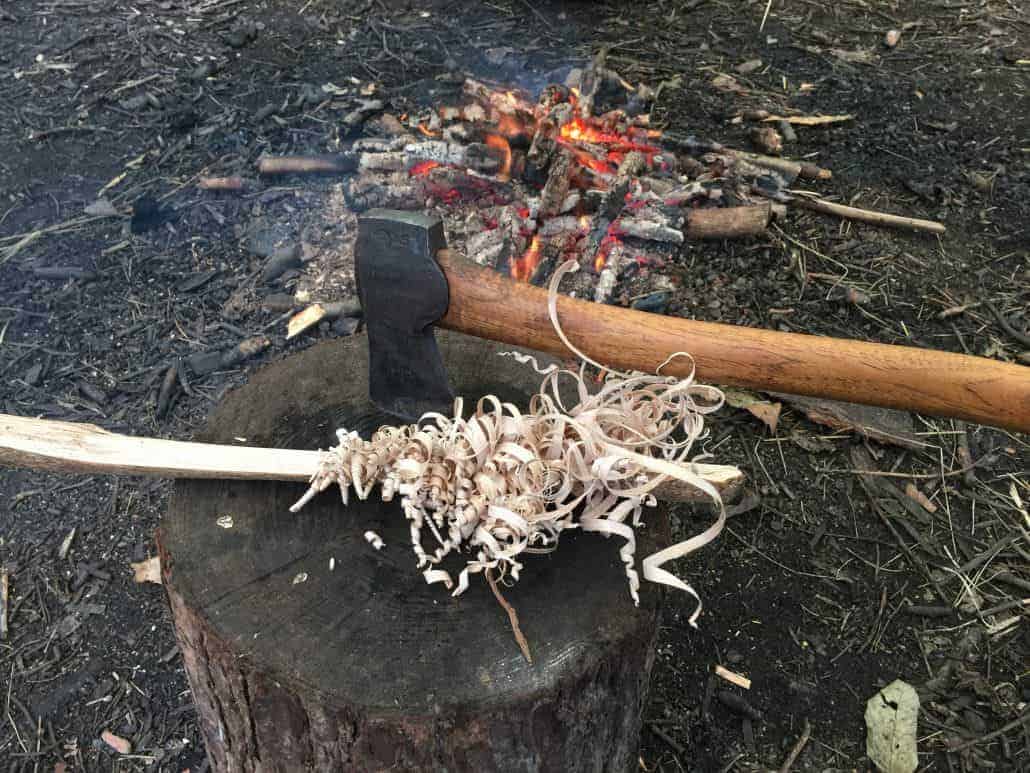
A small axe, such as the Gransfors Bruk’s Small Forest Axe is indispensable for building a long-term bushcraft shelter. These axes weigh about 900 grams and have a handle length just shy of 49cm.
https://www.gransforsbruk.com/en/product/gransfors-small-forest-axe/


